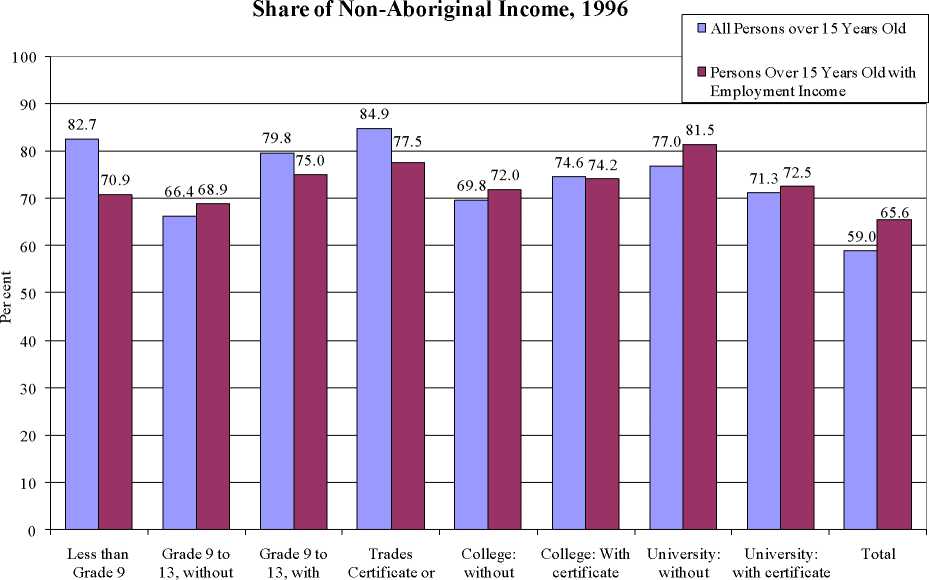46
of non-Aboriginal incomes (77.5 per cent among those with employment income) (Chart 11).
The situation of university graduates and students did not change much but those without a
certificate suffered a slight decline in their relative income (77.0 per cent in 1996, 81.5 per cent
among those with employment income). Those with a certificate experienced a slight increase,
from 71.3 per cent in 1996, but this was almost inexistent among those with employment
income, a group that earned 72.5 per cent of non-Aboriginal income in 1996.
Chart 11: Average Employment Income of the Aboriginal Population, as a

certificate certificate Diploma certificate
Source: Census 1996
certificate
iii. On-Reserve/Off-reserve Aboriginal Income
One of the key determinants of income for Aboriginal and non-Aboriginal populations
alike is employment opportunity, which is in turn greatly influenced by where one resides. The
report titled — Encouraging Success: Ensuring Aboriginal Youth Stay in School, (Brunnen,
2005b) shows that at each level of educational attainment, there is a large on-reserve/off-reserve
income gap (chart 15). On-reserve residents tend to earn less than off-reserve urban residents.
Tax exemptions on reserve may partially decrease the income gap, but they are not likely to
account for the entire difference.
Private returns to education also differ for on and off reserves individuals. At the
university degree attainment level, Aboriginal Canadians living on-reserve are 2.5 times more
likely to earn $50,000 than they are to earn under $10,000. Off-reserve Aboriginals are 1.3 times
more likely. However, the returns to education are most often better for off-reserve urban
Aboriginals than for on-reserve Aboriginals. Excluding the university degree attainment
category, off-reserve urban returns are 1.5 higher than on-reserve returns. Clearly, living on or
More intriguing information
1. Developmental Robots - A New Paradigm2. The name is absent
3. Examining Variations of Prominent Features in Genre Classification
4. Cancer-related electronic support groups as navigation-aids: Overcoming geographic barriers
5. Voting by Committees under Constraints
6. GROWTH, UNEMPLOYMENT AND THE WAGE SETTING PROCESS.
7. The name is absent
8. CURRENT CHALLENGES FOR AGRICULTURAL POLICY
9. CONSIDERATIONS CONCERNING THE ROLE OF ACCOUNTING AS INFORMATIONAL SYSTEM AND ASSISTANCE OF DECISION
10. Optimal Vehicle Size, Haulage Length, and the Structure of Transport Costs